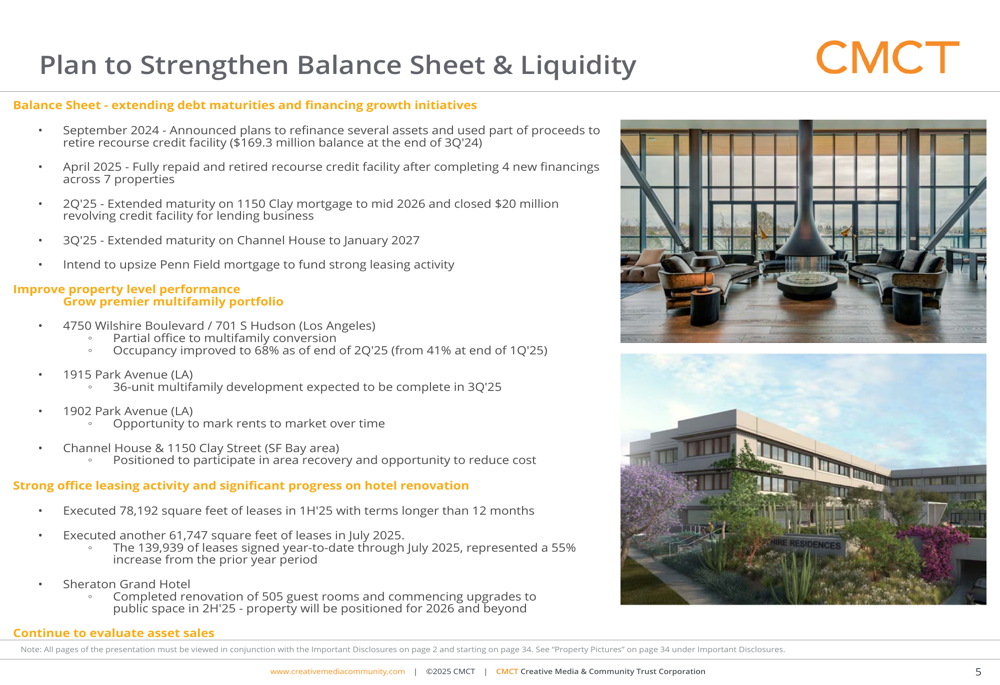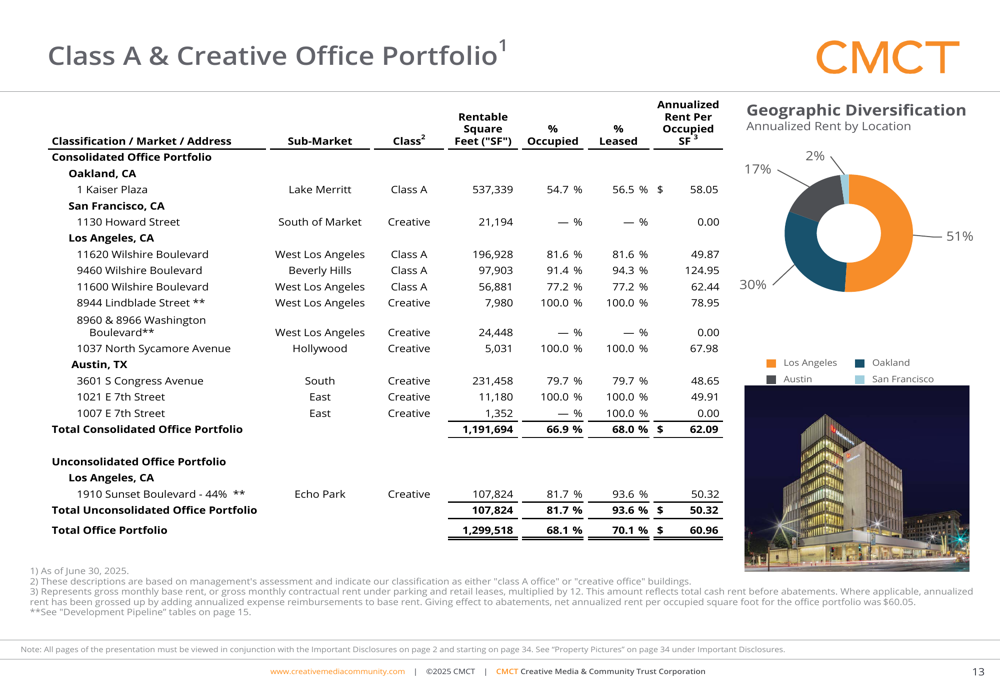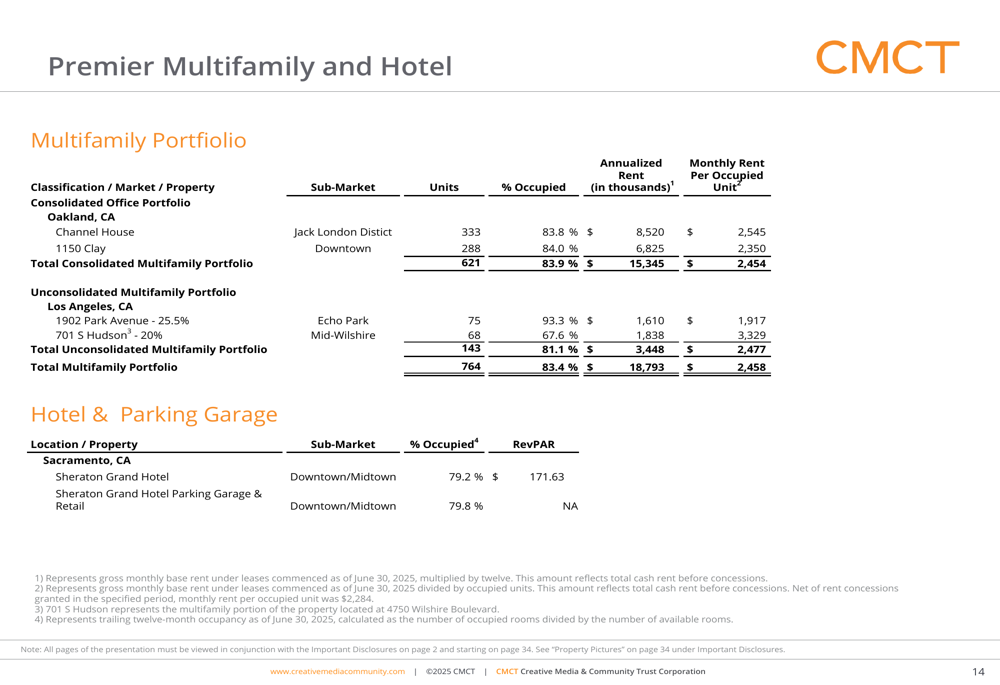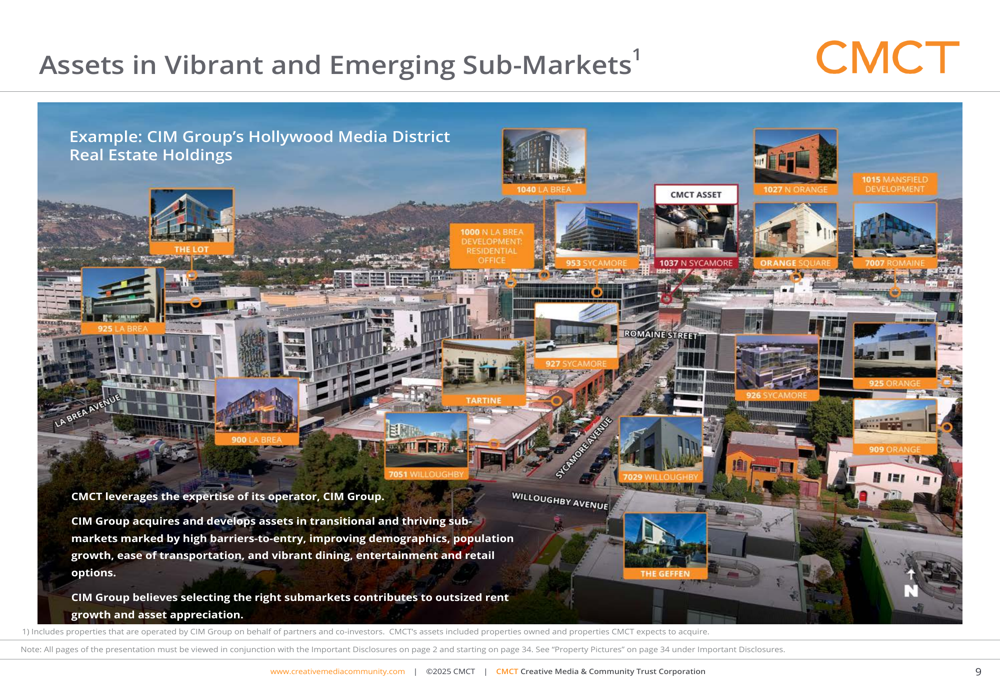Is this U.S.-China selloff a buy? A top Wall Street voice weighs in
Introduction & Market Context
Creative Media & Community Trust Corporation (NASDAQ:CMCT) released its August 2025 shareholder presentation, outlining its strategic focus on creative office and premier multifamily assets in vibrant communities. The presentation comes amid challenging financial results, with the company’s Q1 2025 earnings showing a decline in net operating income (NOI) and negative core funds from operations (FFO).
CMCT shares were trading down 7.5% in premarket activity following the presentation release, extending losses after a 4.07% drop following its Q1 earnings announcement. The stock closed at $8.27 on August 12, 2025, well below its 52-week high of $551.39 but above its 52-week low of $4.03.
Strategic Initiatives
The presentation highlighted CMCT’s plan to strengthen its balance sheet and improve liquidity, a critical focus given the company’s recent financial challenges. Key initiatives include extending debt maturities, refinancing several assets, and retiring its recourse credit facility.
As shown in the following slide detailing the company’s balance sheet strengthening plan:

CMCT fully repaid and retired its recourse credit facility in April 2025, extended the maturity on its 1150 Clay mortgage, and closed a $20 million revolving credit facility in Q2 2025. The company also extended the maturity on Channel House in Q3 2025 and intends to upsize its Penn Field mortgage.
CEO David Thompson emphasized this focus in the Q1 earnings call, stating: "We remain focused on improving our balance sheet and liquidity and accelerating our focus towards premier multifamily assets."
Portfolio Composition & Performance
CMCT’s portfolio strategy centers on benefiting from the trend toward a more cohesive work/live lifestyle, with investments in both creative office spaces and multifamily properties in emerging submarkets.
The company’s office portfolio consists of 12 Class A and creative office properties spanning 1.3 million square feet, with an occupancy rate of 68.1% and a leasing rate of 70.1%. The portfolio generates annualized rent of $60.96 per occupied square foot, as detailed in this comprehensive breakdown:

The multifamily portfolio includes four premier Class A properties with 764 total units and one property under development with 36 units. However, this segment has faced significant challenges, with Q1 2025 earnings revealing a multifamily NOI of -$620,000 compared to +$917,000 in the same period last year.
The multifamily and hotel portfolio details are presented in the following slide:

Despite the multifamily segment’s struggles, CMCT’s hotel property, the Sheraton Grand Hotel in Sacramento, has shown strong performance with a 79.2% occupancy rate and RevPAR of $171.63. This aligns with the Q1 earnings report, which showed a 15% increase in hotel NOI to $4.7 million.
Geographic Diversification & Market Strategy
CMCT’s portfolio is geographically diversified across several key markets, with Los Angeles representing 51% of the portfolio, Oakland 30%, Austin 17%, and San Francisco 2%. The company’s strategy focuses on acquiring and developing assets in vibrant and emerging submarkets with high barriers to entry.
The presentation highlighted CIM Group’s (CMCT’s manager) expertise and track record in identifying promising submarkets, as illustrated by their Hollywood Media District real estate holdings:

In Oakland, where CMCT acquired Channel House and 1150 Clay Street in Q1 2023, the company acknowledged ongoing rental rate challenges. The presentation noted that Oakland experienced a wave of new Class A supply from 2018-2022, but vacancy has declined to 10.0% from a peak of 17.8% in Q2 2021.
The Austin market was presented as particularly promising, with the company citing no state income tax, rapid office rent growth (10-year CAGR of 5.6%), and strong population growth (five-year forecast growth rate of 2.0% versus 0.5% in the U.S.).
Financial Challenges & Outlook
While the presentation emphasized strategic initiatives and portfolio strengths, CMCT’s recent financial performance reveals significant challenges. Q1 2025 segment NOI decreased to $11.8 million from $13.6 million in Q1 2024, and core FFO was negative at $5.1 million (-$8.85 per diluted share).
The office segment, which represents the largest portion of CMCT’s portfolio, saw NOI decline to $7.1 million from $7.9 million year-over-year. Despite executing 78,192 square feet of leases in the first half of 2025 and another 61,747 square feet in July 2025, office occupancy remains at 68.1%.
To address these challenges, CMCT is focusing on improving property-level performance, particularly in its multifamily portfolio. The company highlighted progress at 4750 Wilshire Boulevard, where occupancy has improved to 68% following a partial office-to-multifamily conversion, and noted that its 36-unit multifamily development at 1915 Park Avenue is expected to be completed in Q3 2025.
Forward-Looking Statements
CMCT’s presentation outlined several growth initiatives, including an asset-light development approach where the company may coinvest up to 80% in each project to enhance returns and mitigate risk. The development pipeline is primarily focused on multifamily projects in Los Angeles, Austin, Oakland, and Sacramento.
Steve Altobrando, responsible for portfolio oversight, noted during the Q1 earnings call that "elevated construction costs have made new development increasingly difficult, which we think will benefit our completed properties." This insight suggests CMCT sees a competitive advantage for its existing properties in the current high-cost environment.
However, investors should consider several risks, including the challenging office financing environment, high construction costs, the multifamily segment’s recent decline, potential market saturation in key areas, and broader economic pressures that could affect consumer spending and demand for real estate.
As CMCT continues its strategic pivot toward multifamily assets and creative office spaces, the company’s ability to improve occupancy rates, strengthen its balance sheet, and execute its development pipeline will be critical to reversing recent financial trends and delivering value to shareholders.
Full presentation:
This article was generated with the support of AI and reviewed by an editor. For more information see our T&C.
